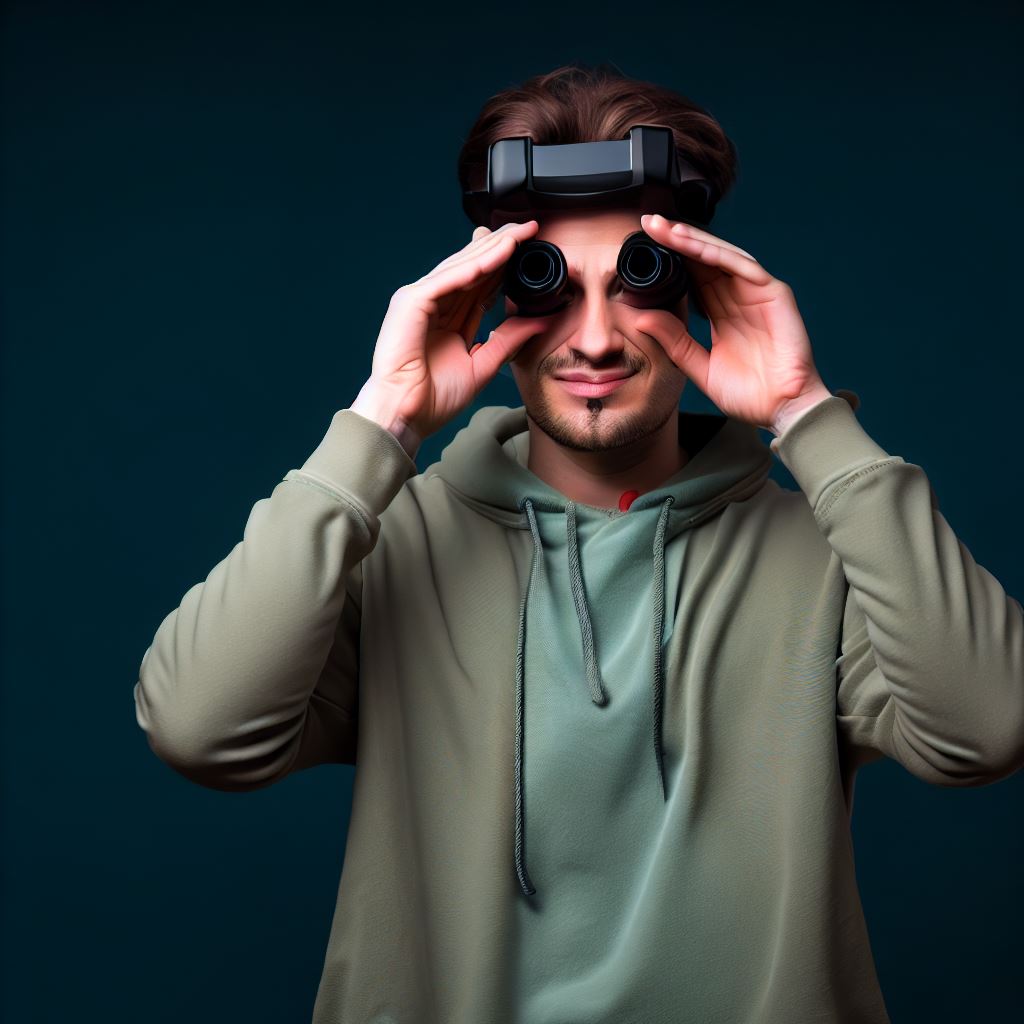

Imagine being able to see clearly in complete darkness, as if it were daytime. Night vision equipment has revolutionized the way we see things in low light conditions, providing a sense of clarity and visibility that was once unimaginable.
But just how far can you see with night vision equipment? This article explores the capabilities of this remarkable technology and uncovers the distance at which it can truly extend your vision.
Prepare to be amazed as we unravel the mysteries of night vision equipment and its extraordinary range.
Factors Affecting Night Vision Range
Night vision equipment is designed to enhance your ability to see in low-light or dark conditions. However, the effectiveness of these devices can vary based on several factors. Understanding these factors can help you determine the range and performance of your night vision equipment.
Ambient Light Levels
The amount of available ambient light greatly impacts the range of your night vision equipment. In conditions with a higher level of ambient light, such as a well-lit urban environment, night vision devices may not provide a significant advantage.
On the other hand, in extremely low-light conditions, the range of your night vision equipment can be significantly extended.
Infrared Illumination
Infrared illumination is a feature found in many night vision devices. These devices emit infrared light that is invisible to the human eye but can be detected by the night vision device’s sensor. When ambient light levels are extremely low or non-existent, infrared illumination can provide additional light to enhance the range and effectiveness of your night vision equipment.
Image Quality
The image quality of your night vision device plays a crucial role in determining its range. Higher-quality night vision devices generally offer better resolution, clarity, and contrast, resulting in improved visibility and range.
When choosing a night vision device, consider factors such as sensor resolution, image processing capabilities, and the quality of the optics.
Magnification
Night vision devices with higher magnification capabilities can allow you to see objects that are farther away. However, higher magnification can also narrow your field of view, which may limit your situational awareness. Finding the right balance between magnification and field of view is essential to optimize the range and performance of your night vision device.
Optical Design
The optical design of a night vision device can significantly impact its range. Factors such as the quality of the lenses, the type of lens coating, and the design of the objective lens can affect light transmission, image clarity, and overall performance.
It is important to choose a night vision device with a well-designed optical system to maximize its range and effectiveness.
Generation of Night Vision Technology
Night vision technology has evolved over the years, with advancements in technology leading to the development of different generations of night vision devices. Each generation offers varying levels of performance and range.
Generation 1
Generation 1 night vision devices are the most basic and affordable option available. They utilize an electronic image intensifier tube to amplify available light. While these devices can provide a significant improvement in low-light conditions, their range is generally limited to around 75-100 yards. Generation 1 devices are best suited for close-range observation and general low-light use.
Generation 2
Generation 2 night vision devices offer improved performance compared to Generation 1. They often feature better image quality, increased range, and enhanced sensitivity to low levels of light.
Generation 2 devices typically have a range of up to 200 yards or more, making them suitable for a wide range of applications that require better visibility in low-light conditions.
Generation 3
Generation 3 night vision devices are considered high-performance devices with superior image quality, increased range, and enhanced sensitivity. They incorporate a gallium arsenide (GaAs) photocathode, which results in improved low-light performance.
Generation 3 devices can provide a range of up to 300 yards or more, making them ideal for demanding applications that require excellent visibility in near-total darkness.
Generation 4
Generation 4 night vision devices represent the most advanced technology available. These devices feature further improvements in image quality, range, and sensitivity.
They utilize autogating technology to minimize image distortion caused by bright light sources. Generation 4 devices can offer a range of over 300 yards and provide exceptional performance in extreme low-light conditions.
Night Vision Devices
Night vision technology has been incorporated into various devices to meet different needs and applications. Here are some common types of night vision devices:
Night Vision Goggles
Night vision goggles are binocular devices that allow you to see in the dark with both eyes. These devices are typically worn on the head and provide a hands-free viewing experience.
Night vision goggles are widely used by military personnel, law enforcement agencies, and outdoor enthusiasts. They come in various generations and offer different ranges based on the technology used.
Night Vision Scopes
Night vision scopes are designed to be mounted on firearms, providing enhanced visibility in low-light conditions. These scopes allow you to accurately aim and shoot in the dark, making them particularly useful for hunters, security personnel, and tactical operations.
Like night vision goggles, the range of night vision scopes varies depending on the generation and other factors.
Thermal Imaging Devices
Thermal imaging devices, also referred to as infrared cameras, detect and measure the heat emitted by objects and create a visual representation of the temperature differences. These devices can effectively “see” in total darkness, fog, smoke, and other challenging conditions.
While not technically night vision devices, thermal imaging devices are commonly used in situations where conventional night vision equipment may not be as effective.
Range of Different Night Vision Devices


The range of night vision devices varies depending on several factors, including the generation, optical design, and ambient light conditions. Here are some typical ranges for different types of night vision devices:
Range of Generation 1 Devices
Generation 1 night vision devices usually offer a range of around 75-100 yards. This range is suitable for close-range observation, navigation, and general low-light use.
Range of Generation 2 Devices
Generation 2 night vision devices can provide a range of up to 200 yards or more. This extended range makes them suitable for a wide range of applications, including hunting, surveillance, and nighttime photography.
Range of Thermal Imaging Devices
Thermal imaging devices, as mentioned earlier, do not have a specific range in the same way that traditional night vision devices do. Instead, the range of thermal imaging devices is determined by the sensitivity and resolution of the sensor. High-end thermal imaging devices can detect heat signatures at distances exceeding several hundred yards or more.
Limitations of Night Vision Equipment
While night vision equipment can greatly enhance your ability to see in the dark, it is important to understand its limitations. Here are some factors that can limit the performance of night vision devices:
Weather Conditions
Weather conditions such as heavy rain, fog, or snow can decrease the effectiveness and range of night vision equipment. These conditions can scatter or absorb light, resulting in reduced visibility and range.
Obstructions and Terrain
Obstructions such as trees, buildings, or other objects can obstruct the line of sight and limit the range of night vision equipment. Additionally, the nature of the terrain can affect visibility, as uneven or cluttered terrain may make it harder to detect objects.
User Skill and Experience
The effectiveness of night vision equipment is also influenced by the skill and experience of the user. Proper training and familiarity with the equipment can greatly improve its range and overall performance.
Battery Life
Night vision devices often rely on batteries to power their electronics. The battery life of these devices can vary depending on factors such as usage time, temperature, and battery type. It is essential to have spare batteries and plan accordingly to ensure uninterrupted usage.
Techniques for Enhancing Night Vision Range
While night vision devices have inherent limitations, there are several techniques that can help enhance their range and performance:
Using Infrared Illuminators
Infrared illuminators emit additional infrared light that is detected by the night vision device’s sensor. By using an infrared illuminator in conjunction with your night vision device, you can extend its effective range in extremely low-light conditions.
Using Higher Generation Devices
Upgrading to a higher-generation night vision device can significantly improve its range and overall performance. Higher-generation devices generally offer better image quality, increased sensitivity, and enhanced low-light performance.
Using Additional Optical Accessories
Optical accessories such as magnification lenses, filters, or lens adapters can be used to enhance the range and functionality of night vision devices. These accessories can improve the clarity, field of view, and overall performance of your night vision equipment.
Legality and Safety Considerations
Before using night vision equipment, it is essential to be aware of the legal restrictions and safety considerations associated with their use.
Legal Restrictions
Night vision devices are regulated in many countries, and there may be legal restrictions on their purchase, ownership, and use. It is important to familiarize yourself with the laws and regulations in your country or region before acquiring and using night vision equipment.
Eye Safety
Night vision devices can emit concentrated light, including invisible infrared light. It is crucial to follow the manufacturer’s guidelines and safety precautions to protect your eyes from potential damage. Using protective eyewear or filters can help minimize the risk to your eyes when using night vision equipment.
Conclusion
Night vision equipment can greatly enhance your ability to see in low-light or dark conditions, providing an advantage in a variety of applications. Factors such as ambient light levels, infrared illumination, image quality, magnification, and optical design all play a role in determining the range and performance of night vision devices.
Different generations of night vision technology offer varying levels of performance and range, with higher generations generally providing better visibility and longer ranges. Night vision devices such as goggles, scopes, and thermal imaging devices offer unique features and applications, catering to various needs.
While night vision equipment has limitations, understanding these limitations and employing techniques such as using infrared illuminators, upgrading to higher generation devices, and utilizing additional optical accessories can help enhance the range and effectiveness of your night vision equipment.
It is crucial to be aware of the legal restrictions and safety considerations associated with night vision equipment to ensure compliance and protect your eyes from potential harm.
By considering these factors and guidelines, you can make informed decisions about your night vision equipment and maximize its range and performance for your specific needs.
Hunting Crossbow For Beginners
Is It Legal To Hunt With A Crossbow?
What Kind Of Crossbow Is Used For Deer Hunting?





